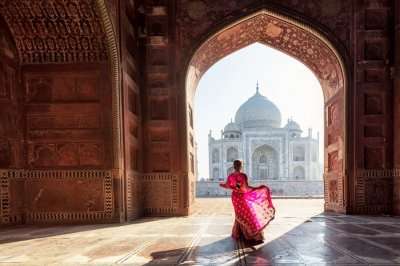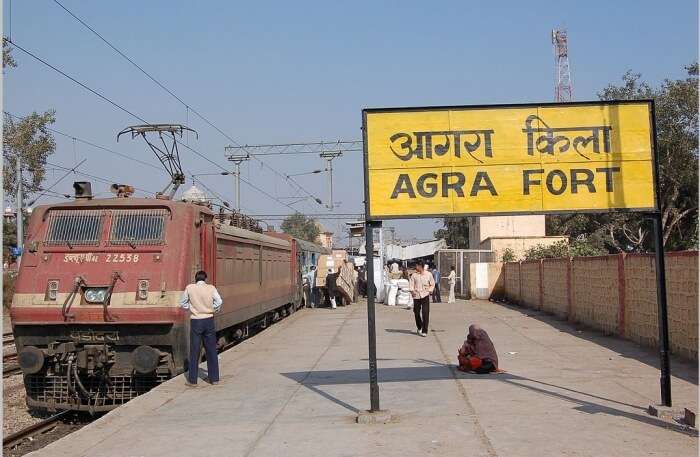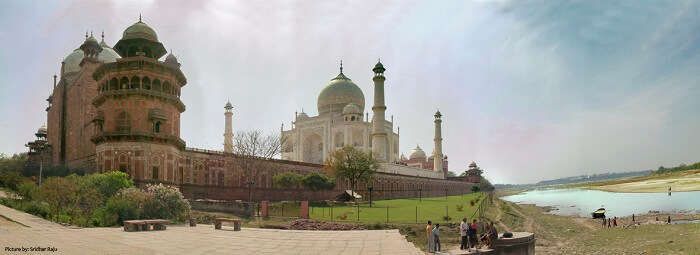Wonder Of India- The Taj Mahal
- Get link
- X
- Other Apps

Famous poet Rabindranath Tagore portrayed it as ‘a teardrop on the cheek of the universe’ and Rudyard Kipling called it ‘the embodiment of all things pure’. Mughal emperor Shah Jahan famously said – “it made the moon and the sun drop tears on it”. What is it that we are talking about? Of course the one and only Taj Mahal, a monument built out of immense love and memory, a monument that made hundreds of thousands of people bow down to their knees, a monument that made the city of Agra a famous and widely visited tourist spot in India. It is a place where you’ll fall in love with the Mughal Era and pleasure yourself with the architecture and royalty. And have you seen Taj Mahal at night? If not, then let us tell you it is one of the most magnificent sights ever!
About The Taj Mahal In India

People widely consider it as one of the most beautiful buildings in the world. Located in the historical city of Agra, the Taj Mahal is called as the ‘symbol of love’. A wide range of visitors come around admiring the beauty of the monument and appreciate the architecture. Taj Mahal is known as the Crown of Palaces in Persian, giving a breathtaking sight to its aficionados.
Regarded as one of the finest illustrations of Mughal architecture in India, Taj Mahal is a UNESCO World Heritage Site. One of the best parts of visiting the Taj Mahal is to appreciate the elegance of aptness of extents and luxuriousness of geometrical prototypes of such gracefully done gardens that enhance the dignity of the Taj Mahal, adding glory to the slenderness of this symbol of love.
Best Time To Visit Taj Mahal

One is advised to visit the Taj either during sunrise or sunset since these two timings in the day provide breathtaking views of this monument against the colors of the sky. Also, one should visit Agra between October to March as the weather is perfect for sightseeing and the scorching heat won’t bother travelers who come to visit the Taj.
History Of Taj Mahal

The famous Taj Mahal story always tends to intrigue listeners! The Taj was built by Emperor Shah Jahan in the loving memory of his third wife, Mumtaz Mahal, who is said to have passed away after giving birth to their 14th child in 1631. Call it a symbol of immense love, the emperor was left so heartbroken that his hair turned grey eventually in grief. That’s when he decided to build a memorial in her memory and the construction began the following year, 1632.
It is said that the main building took eight years to finish. The whole monument wasn’t completed until 1653. The sad part is, Shah Jahan was overthrown by his own son Aurangzeb soon after the building was finished. He was imprisoned inside the Agra Fort for the rest of his life where he used to look at his remarkable creation through the window, admiring it and remembering his beloved Mumtaz. He died in 1666 and was buried alongside his wife Mumtaz inside the tomb of Taj Mahal.
It is said that over 20,000 people from India and Central Asia were recruited to work on the architecture. Shah Jahan was keen to bring some specialists from Europe to produce the delicate white marbles and pietra dura (marble inlay work), which was made up of thousands of semiprecious stones. In the year 1983, the Taj was given a highly reputed designation and it was recognized as a World Heritage Site. It underwent a big restoration project in the early 20th century. It is not just the beauty of this glittering white marble structure but also the Taj Mahal history that attract people from around the world to Agra.
Interesting Facts About Taj Mahal
Any Taj Mahal information is incomplete without mentioning some interesting details about this place. Being one of the seven wonders of the world itself makes the Taj Mahal location an interesting spot to visit and explore. But here are some of the facts that we didn’t know about earlier. Let’s dig some of them:
- There is one small hole located on the ceiling of the main hall right above the tombstone of Shah Jahan’s beloved Mumtaz Mahal. Seems like there is a flaw in the magnificent Taj. It is said that one of the artisans decided to sabotage the emperor’s dream of having a flawless monument, so he made a hole which is perpendicular to the tombstone of the queen.
- The minarets were built leaning outwards. It was done so to protect the monument from natural calamities like earthquakes. It’s just a matter of keen observing and you’ll notice that the four minarets are leaning outwards. It was done to ensure the safety of the tomb.
- There was a temple built and named after the infamous and one of the biggest Indian conman Natwarlal who apparently had sold the grandiose Taj Mahal at least thrice to some wealthy individuals. The infamous Natwarlal is widely known for selling the Taj repeatedly so his native villagers decided to build a temple on his name with his statue.
- The groundwork of the Taj would have worn out years ago if it hadn’t been for the Yamuna River. The foundation was actually not ever-lasting. The wood used would have rotten over time and eventually ruined. Thanks to the Yamuna river, it kept the wood strong and moist.
- The illustrious interior of Taj can blind any with its magnificent decorative work. The inside of Taj Mahal is made up of different kinds of extremely rare and very precious stones, sourced from different parts of the world including China, Sri Lanka, Tibet and some parts of India. The British era had violated the monument a number of times because of these stones. The restoration work started in the late 19th century. It’s fair to say anyone would be blinded by the richness of the mahal.
- It is strange but it is a fact that the magnificent Mahal is quite taller than Delhi’s heritage monument – the Qutub Minar. The lofty Taj is actually five feet taller than Delhi’s Qutub Minar. Strange but true.
- If we ever decide to find out how expensive the Taj Mahal would be now, it sure will take a breath away. Shah Jahan had spent around 32 million rupees on the architecture during that time. If we do the calculations keeping the present rate in mind, the amount would be around 1,062,834,098 USD. Quite Expensive!
- In the year 2000, the famous Indian magician PC Sorkar Jr. vanished the whole of Taj by his optical illusion trick. One of his greatest tricks – this had completely astonished his audience.
- The Taj is visited by over 12,000 people every day.
- Had Aurangzeb not imprisoned his father – the emperor Shah Jahan, we might be able to see another Taj Mahal, a black Taj Mahal. Yes, emperor Shah Jahan had a desire to build a black Taj Mahal for himself, just like the one he built for his beloved Mumtaz. According to the historians and experts, Shah Jahan had begun to erect his own tomb, but could not get on with it as his son dethroned and imprisoned him.
- The monument changes colors. Depending on the light outside and the time of the day, the monument can appear to change its colors. The beautiful Taj will look a little pink in the morning, white in the day time and golden-ish after the sun sets.
- More than 1,00 elephants used to transport the heavy supplies and materials that were going to be used in the construction of the Taj Mahal.
- A Bangladeshi filmmaker created a replica of the Taj Mahal in the year 2008 so that locals can enjoy it in their own country and they don’t have to travel to India to witness it. It cost him around US 56 Million Dollars.
- In 2007, the Taj Mahal was declared as one of the Seven Wonders Of The World by bagging 100 million votes. This increased the inflow of tourists double-fold.
Q. Why was the Taj Mahal built?
A. Taj Mahal was built by Shah Jahan in memory of his wife Mumtaz Mahal.
Q. How many Taj Mahal are there in India?
A. There is just one Taj Mahal in the world, but there is a replica of the Taj made by Emperor Shah Jahan’s grandson, Prince Aazam Shah. He had built it in the memory of his mother, Dilras Banu Begum. It is known as the Bibi Ka Maqbara which means ‘Tomb of the Lady’. Its resemblance to the Taj Mahal also got it the name ‘Taj of the Deccan’. Bibi Ka Maqbara is located in Aurangabad of Maharashtra.
- Get link
- X
- Other Apps


Good content
ReplyDeleteEta darun
ReplyDeleteGood 😊👍
ReplyDeleteDarun❤️
ReplyDeleteDarun
ReplyDelete